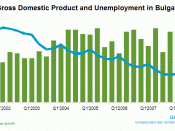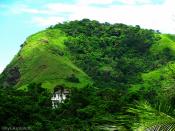Geography: Brazil occupies almost one-half of the entire South America continent, and is the fifth largest country in the world. It borders all Latin American countries except Chile and Ecuador. The 9,170km coastline and the 50,000km navigable inland waterways provide great potentials for water transportation which has not been well developed.
Brazil is topographically relatively flat. 40% of the land is under the Amazon Rain Forest. Most of the arable land is found in the South, but the process of land development for agriculture is pushing into the Central-West and the North as well. The climate is mainly tropical and sub-tropical, and is particularly humid and rainy in the Amazon region and along the coast. Temperate climate is found in the south and on the higher lands. The nation is free from earthquakes, hurricanes and cyclones, but rainstorms, drought and frost occasionally cause considerable damage.
Demography and Social Patterns: Population is around 155 million and growing at about 2% per year.
It is concentrated in the southern states of Minas Gerais, Sao Paulo, and Parana. Almost 60% of the total population live on 20% of the land.(See Table 1) 80% of the population is urban and 20% are rural dwellers. 55% is under 20 years of age and less than 10% is over 60. The average life expectancy is 63 years old.
The majority of Brazilians are of European or African descent. Besides the original Portuguese settlers, other significant ethnic groups include Africans, Germans, Italians, and Japanese. The official language is Portuguese, but English is widely used in the business community. The predominant religion is Roman Catholicism. There is religious freedom, and religion is not a source of social unrest.
The general level of education requires much improvement. About 75% of children above ten years old are considered to be...


